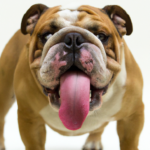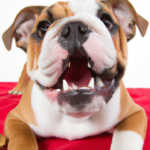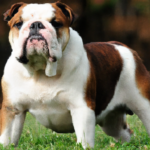Are you struggling with potty training your beloved English Bulldog? Look no further, as this article will shed light on the common mistakes dog owners often make when it comes to potty training their Bulldogs. From understanding the unique characteristics and needs of this breed to implementing effective training methods, we will provide insights and solutions to help you navigate through the challenges of potty training. By avoiding these common pitfalls and implementing innovative training alternatives, you can create a successful potty training regimen that will ensure a positive and rewarding experience for both you and your furry companion.
Mistake: Inconsistency in Training Schedule
When it comes to potty training your Bulldog, establishing a consistent routine is key. Bulldogs thrive on structure and predictability, so it’s important to set a schedule for bathroom breaks and stick to it. By taking your dog outside at the same times every day, they will learn to anticipate and understand when it’s time to go potty.
Another aspect of consistency is adequate supervision during training. Leaving your Bulldog unsupervised for long periods can lead to accidents and setbacks in the potty training process. It’s important to keep an eye on your dog at all times, especially during the early stages of training when accidents are more likely to occur. By providing constant supervision, you can quickly redirect your Bulldog to the appropriate potty area and reinforce proper behavior.
Lastly, neglecting to take your dog outside frequently enough can hinder their progress in potty training. Bulldogs have smaller bladders compared to other breeds, so they may need to go outside more frequently. Be sure to take your dog out every few hours, especially after meals, drinking water, or playtime. By establishing a frequent potty schedule, you can help prevent accidents and reinforce the desired behavior of going outside.
Mistake: Lack of Patience and Persistence
One common mistake many dog owners make during potty training is expecting quick results. It’s important to remember that every dog learns at their own pace, and accidents are a normal part of the learning process. Patience is key when it comes to potty training your Bulldog. Be prepared for accidents and setbacks, and don’t get discouraged.
Bulldogs may be stubborn by nature, so it’s crucial not to give up too soon. Consistency is key, and you must remain persistent in your training efforts. Keep reinforcing positive behavior consistently, even when your Bulldog has accidents. By focusing on positive reinforcement and rewarding your dog for going potty in the designated area, you can encourage them to continue exhibiting the desired behavior.
Mistake: Punishment-Based Training Methods
Using punishment-based training methods can have detrimental effects on your Bulldog’s potty training progress. Harsh or physical punishment can create fear or anxiety around potty training, leading to further accidents and setbacks. Scolding or yelling at your dog for accidents will not effectively teach them where they should go potty.
Instead, focus on positive reinforcement and reward-based training methods. When your Bulldog goes potty in the appropriate spot, praise them and offer a small treat as a reward. This positive association will encourage your dog to continue using the designated bathroom area. By creating a safe and positive environment, you can build trust and strengthen the bond between you and your Bulldog.
Mistake: Not Creating a Designated Bathroom Area
Failing to establish a specific spot outside for elimination can lead to confusion and accidents in the house. Bulldogs thrive on routine and structure, so designating a consistent bathroom area is crucial for successful potty training. Choose a specific spot in your yard where you want your Bulldog to go potty, and consistently take them to that area.
In addition to a designated area, it’s important to use consistent verbal cues for going potty. Choose a specific phrase or command that you consistently use every time you take your Bulldog outside. This verbal cue will help your dog associate the phrase with going potty, making it easier for them to understand what is expected of them.
Allowing your Bulldog to choose random spots in the house to relieve themselves can create confusion and make it difficult for them to understand where they should go. By establishing a designated bathroom area and using consistent verbal cues, you can provide clear guidance to your Bulldog and reinforce the desired behavior.
Mistake: Inadequate Crate Training
Crate training can be a valuable tool in potty training your Bulldog, but it’s important to use the crate properly. Using the crate as a punishment rather than a safe space can create negative associations and hinder the training process. Your Bulldog should view their crate as a comfortable and secure place, not a place of punishment.
When crate training your Bulldog, it’s important to gradually introduce them to the crate and make it a positive experience. Start by placing treats and toys inside the crate to entice your dog to enter. Once your Bulldog is comfortable going inside, gradually increase the amount of time they spend in the crate. This will help them associate the crate with positive experiences and make them more willing to stay inside.
Leaving your Bulldog in the crate for too long can lead to accidents and setbacks in potty training. Bulldogs have limited bladder capacity, so they need frequent bathroom breaks. Avoid leaving your Bulldog in the crate for extended periods, especially if they are not yet fully potty trained. Provide opportunities for regular bathroom breaks to avoid accidents and reinforce the desired behavior.
Mistake: Failure to Recognize Signs of Needing to Go
Not paying attention to your dog’s body language is a common mistake in potty training. Bulldogs may exhibit specific behaviors when they need to go potty, such as sniffing the ground or circling a specific area. By closely observing your Bulldog’s behavior, you can recognize the signs that they need to go outside.
In addition to physical cues, it’s important to pay attention to your Bulldog’s vocalizations. Whining or restless behavior can indicate that your dog needs to go potty. It’s crucial not to ignore these signs and promptly take your Bulldog outside to the designated bathroom area.
Another important aspect is timing. After meals or drinking water, your Bulldog may need to go potty. It’s important to take them outside immediately after these activities to prevent accidents in the house. By being attentive to your dog’s needs and promptly responding to them, you can reinforce the desired behavior and minimize accidents.
Mistake: Insufficient Cleaning and Odor Removal
Thoroughly cleaning up accidents is crucial for successful potty training. Bulldogs have a keen sense of smell, and if they can detect lingering odors from previous accidents, they may be more inclined to go potty in the same spot again. It’s important to clean up accidents promptly and thoroughly to eliminate any lingering odors.
Using cleaners that contain ammonia can actually attract your Bulldog to the same spot, as the smell is similar to that of urine. Avoid using ammonia-based cleaners when cleaning up accidents. Instead, opt for pet-friendly cleaners that are specifically designed to remove pet odors.
To prevent your Bulldog from revisiting the same spot, make sure to thoroughly remove any lingering odors. Use enzymatic cleaners that break down the odor-causing molecules, ensuring that your Bulldog won’t be tempted to go potty in the same area again.
Mistake: Overfeeding and Water Mismanagement
Proper feeding and water management are essential aspects of potty training. Feeding your Bulldog too much or too close to bedtime can lead to more frequent bathroom breaks during the night. It’s important to establish a regular feeding schedule and monitor the amount of food your dog consumes.
Similarly, water intake should be regulated to avoid excessive urination. While it’s important to keep your Bulldog hydrated, allowing unrestricted access to water throughout the day may lead to more frequent bathroom breaks. Monitor your dog’s water intake and provide water at consistent intervals.
Additionally, be mindful of your Bulldog’s diet and any potential digestive issues. Foods that are difficult to digest or that cause gastrointestinal upset can lead to more frequent bathroom breaks. Consult with your veterinarian to ensure that your Bulldog is on a suitable diet that promotes regular and healthy elimination.
Mistake: Lack of Socialization and Exercise
Proper socialization and regular exercise are crucial for a well-rounded and balanced Bulldog. Not providing enough opportunities for your dog to eliminate outside can hinder their progress in potty training. Regular walks and outdoor playtime provide your Bulldog with the necessary exercise and mental stimulation, which can contribute to a healthier bathroom routine.
In addition to exercise, proper socialization with other animals is important for your Bulldog’s overall well-being. Socializing your dog with other friendly dogs can help reduce anxiety and stress, which can, in turn, impact their potty training. By allowing your Bulldog to interact with other dogs and become comfortable in different environments, you can create a more confident and well-adjusted pet.
Mistake: Neglecting Professional Guidance
Sometimes, potty training can be a challenging and frustrating process. Refusing to seek help from a professional trainer or behaviorist may prolong the training period and lead to further difficulties. Professional trainers and behaviorists have the knowledge and expertise to provide guidance and customized training strategies to suit your Bulldog’s individual needs.
In addition to seeking professional help, consulting a veterinarian is essential for identifying any underlying health issues that may be causing potty training problems. Medical conditions like urinary tract infections or gastrointestinal disorders can contribute to frequent accidents. By addressing these underlying health issues, you can make progress in potty training more effectively.
Another beneficial resource for potty training is obedience classes or puppy preschool. These classes provide structured training sessions and socialization opportunities, allowing your Bulldog to learn and thrive in a supportive environment. Obedience classes can help reinforce proper potty training techniques and provide the necessary guidance to achieve success.
By recognizing and addressing these common mistakes in potty training Bulldogs, you can enhance the training experience for both you and your pet. Taking a balanced approach, incorporating patience, consistency, and positive reinforcement, will lay the foundation for a successful potty training journey. With dedication, understanding, and the implementation of appropriate training strategies, you can help your Bulldog develop proper potty habits and enjoy a clean and happy home environment.






